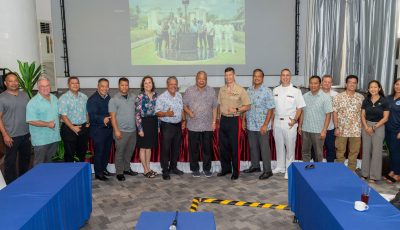Summer aimed as next phase of bird translocation project
The Division of Fish and Wildlife is targeting June or July of next year for the next phase of the Mariana Avifauna Conservation plan, according to division director Manny Pangelinan. The MAC project, in part, translocates birds to islands in the Marianas that are free of the brown tree snake, with the aim to create self-sustaining, satellite populations there.
In an interview yesterday, Pangelinan said they are just focusing now on the logistics of next year’s trip. How many birds will be translocated, the size of crew, and the transportation needed, as well as which island will be targeted for translocation are things to evaluate first, he said.
The MAC project has seven focal species for concern: the Marianas Fruit Dove, Rufous Fantail, Tinian Monarch, Nightingale Reed-warbler, Bridled White-eye, Rota White-eye, and Golden White-eye .Six target islands also have been proposed: Sarigan, Guiguan, Alamagan, Pagan, Agrihan, and Asuncion.
Pangelinan said yesterday that in order for DFW to “maximize” the trip, he’d like to sit down with their fish and wildlife biologists, adding that life history studies of fish might be done as well this summer.
Beginning in 2008, Bridled and Golden White-Eyes, Mariana Fruit Doves, and Rufous Fantails have been successfully translocated to Sariguan, according to a MAC working group report.
The report also proposes a conservation timeline that extends to 2032, and highlights Pagan as possible staging area for cost-effective access to Alamagan, Agrihan and Asucion, but also notes that this would be “depending upon access allowed” to MAC by the U.S. Department of Defense.
DoD has reportedly taken an interest in Pagan for military use. Pangelinan said DFW evaluates concerns of “competing use” and will have to determine “whether that’s the best place [Pagan] to continue with program.”
The MAC report states that using Pagan’s airstrip could “speed up” translocation to more northerly islands, and may reduce costs as the helicopters used for transportation have limited weight capacities.
MAC has proposed monitoring of translocated birds through radio-tracking, tagging, and surveying. Next year, Pangelinan said, they aim to quantify and analyze the effectiveness of the program, and “to see how birds are doing” on Sarigan.
A total of 184 birds total have been translocated from Saipan and Tinian to Sarigan from 2008 to 2012, according to MAC.



























